アブラナは作物~帰化雑草です。和名「油菜」の由来は茎葉が野菜に、子実が油糧になるから。花が観賞用に、搾油粕が肥飼料にもなります。
Canola is both a crop and a naturalized weed. The Japanese name “Oil Vegetables” is because the stems and leaves are used as vegetables, and the grains are used as an oil. The flowers are for ornamental purposes, and the oil cake is also used as feed and fertilizer.
【仮名】アブラナ, ナタネ, ナノハナ
【和名】油菜, 菜種, 菜の花
【英名】Canola
【学名】Brassica rapa
【誕生】01/ 06, 02/ 06, 02/ 20, 03/ 07, 03/ 10, 03/ 27
【開花】02, 03, 04, 05月
【花色】Yellow
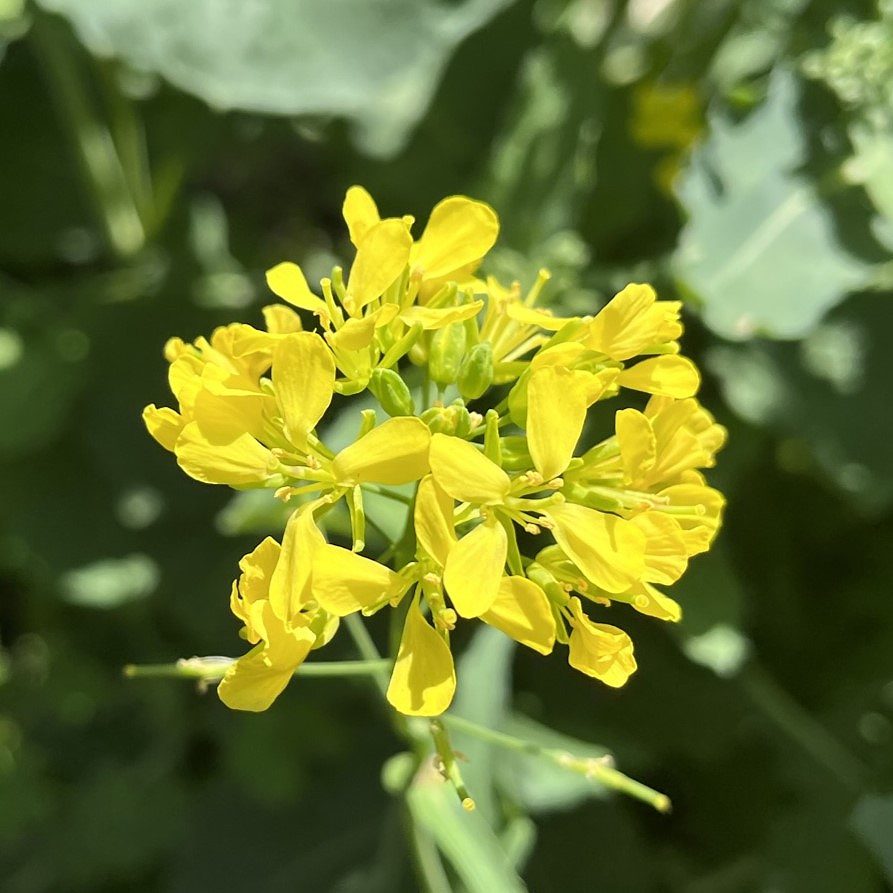

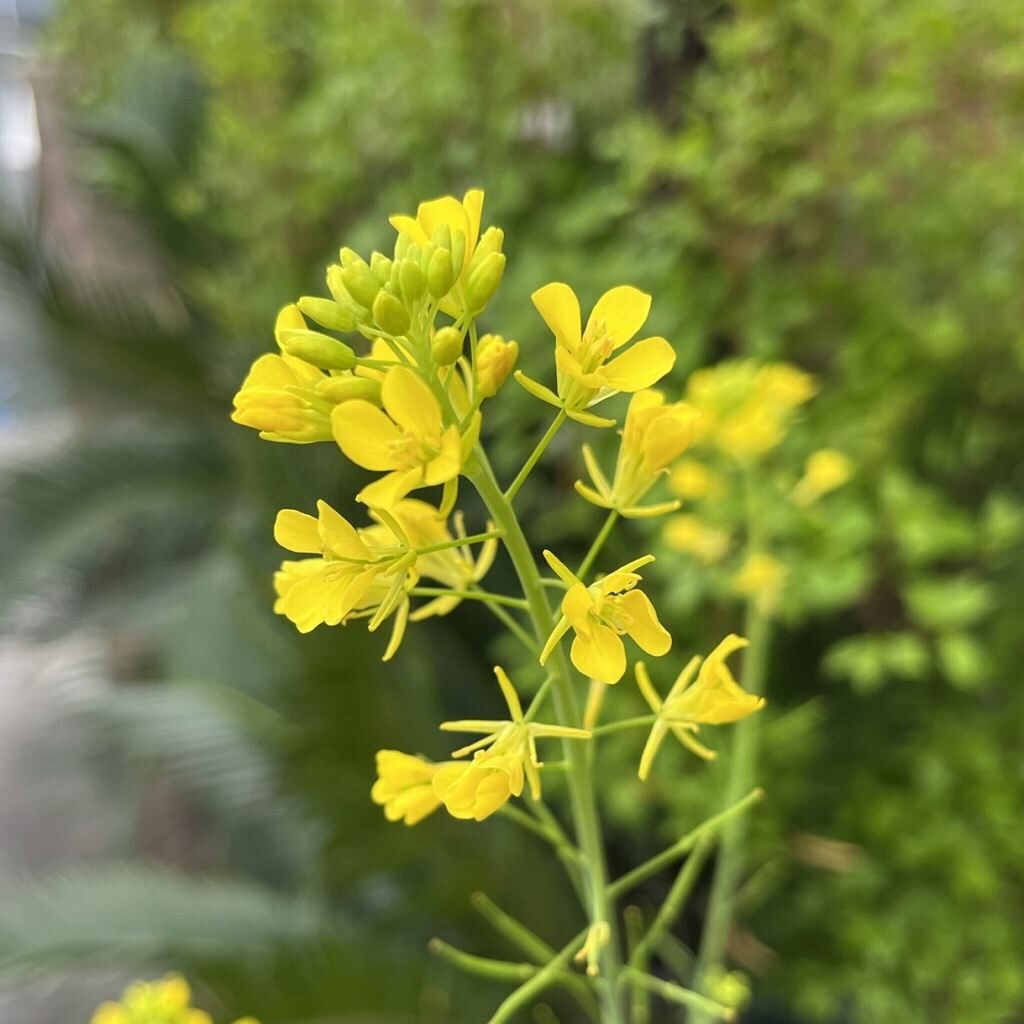
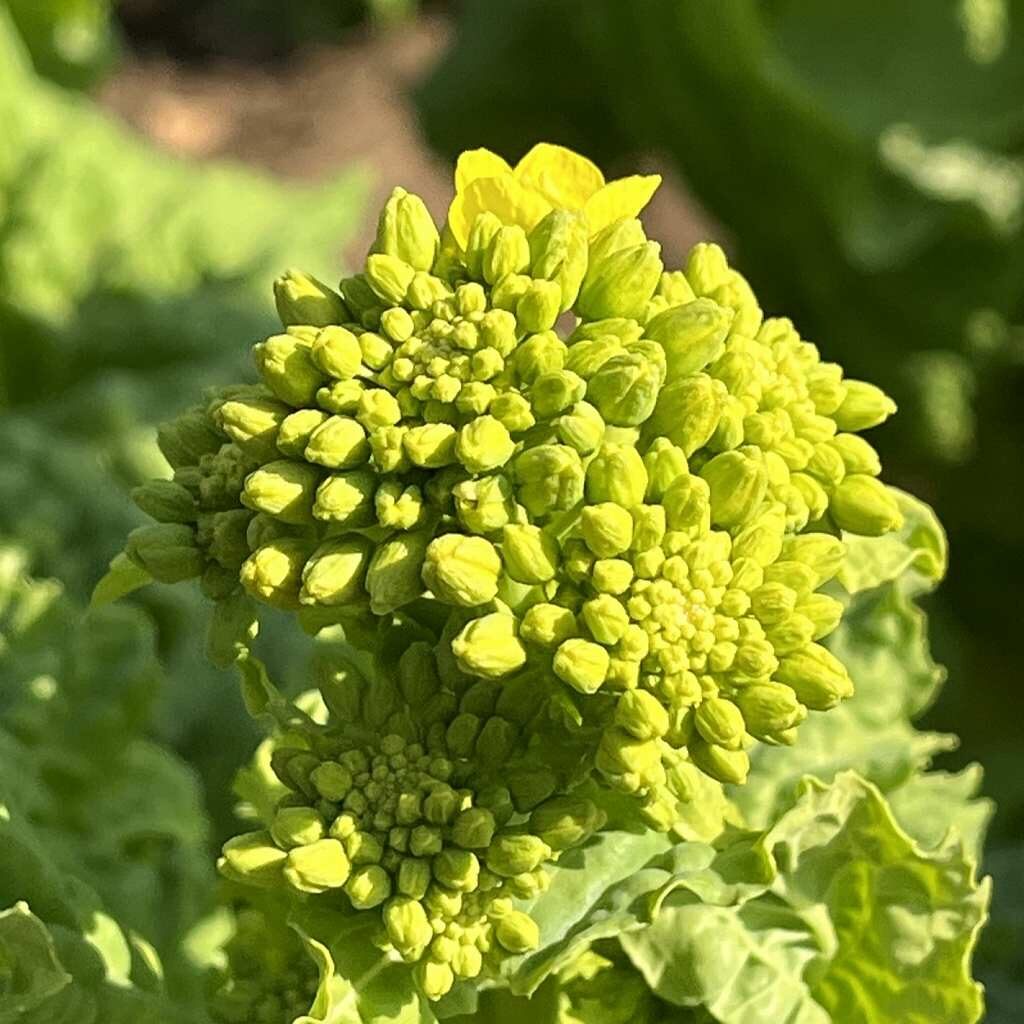
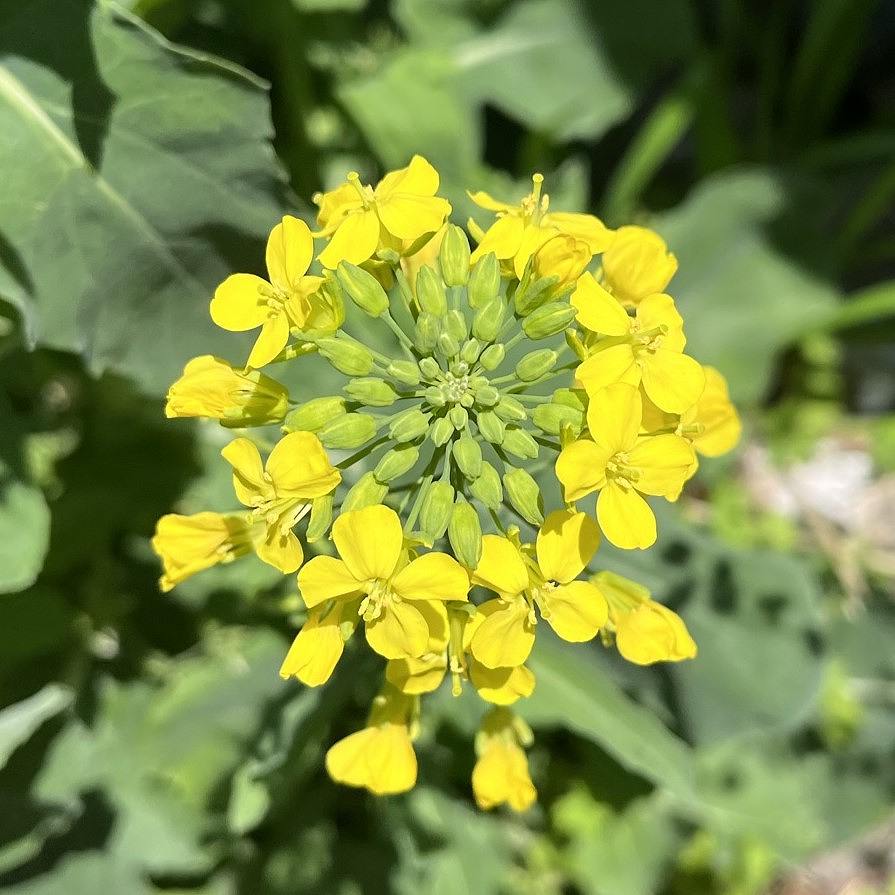
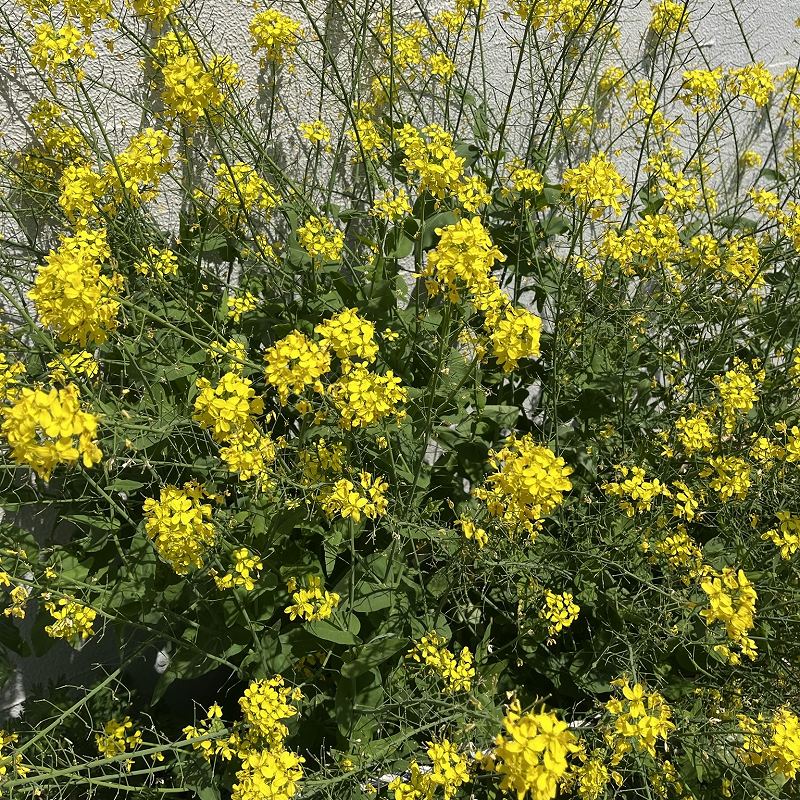
アブラナ
アブラナの名前
アブラナはアブラナ科の作物~帰化雑草です。和名「油菜」の由来は茎葉が野菜に、子実が油糧になるから。花が観賞用に、搾油粕が肥飼料にもなります。英名のキャノーラは油糧用の品種名。ここでは日本で旧来のラパ種、現在のナプス種、花が似ているジュンセア種を紹介します。
アブラナの旧来種
アブラナの旧来種「油菜」は、もともと西アジア~北欧の耕地雑草です。それが穀類に紛れて中国に持ち込まれ、食用に改良。日本では弥生時代から茎葉や花蕾が野菜に、江戸時代から子実が搾られて灯油などに用いられました。明治時代に「西洋油菜」が普及してからは再び野菜に。
アブラナの現在種
アブラナの現在種「西洋油菜」は原産地が北欧~シベリアで、日本で明治時代に導入。油糧用として収量が多く、旧来種に代わって栽培が広がりました。子実は旧来種の赤色に対し、黒色なので「黒種」という別名も。世界的な油糧用作物ですが、野菜用や観賞用の改良種もあります。
アブラナの類似種
アブラナの類似種「芥子菜」は、原産地が中央アジアで、日本へは弥生時代に伝来。辛味成分のシニグリンを含むため、子実が和辛子に、茎葉がお浸しなどに用いられます。油菜との違いは花弁が4枚の十字型でなく、2枚2組のH型。そして、葉が付け根のところで茎を抱きません。
Canola
Name of Canola
Canola is both a crop and a naturalized weed of the Brassicaceae family. The Japanese name “Oil Vegetables” is because the stems and leaves are used as vegetables, and the grains are used as an oil. The flowers are for ornamental purposes, and the oil cake is also used as feed and fertilizer. The English name Canola is a variety name for oil. Here, we will introduce the traditional species “Brassica rapa”, the current species “Brassica napus”, and the similar species “Brassica juncea”.
Traditional species of Canola
The traditional species of Canola “Brassica rapa” was a weed that originally grew in cultivated lands from West Asia to Northern Europe. It was mixed with cereals and brought to China, where it was improved to be edible. In Japan, the stems, leaves and flower buds have been used as vegetables since the Yayoi period, and the grains have been squeezed and used for kerosene since the Edo period. After “Brassica napus” became popular in the Meiji era, it became a vegetable again.
Current species of Canola
The current species of Canola “Brassica napus” originated in Northern Europe and Siberia, and was introduced to Japan in the Meiji era. It had a high yield as an oil crop, and its cultivation had spread in place of traditional species. The seeds were black in contrast to the traditional red color, so it was also known as “black seed”. Although it is a global oil crop, there are also improved varieties for vegetables and ornamental use.
Similar species of Canola
The similar species of Canola “Brassica juncea” originated in Central Asia and were introduced to Japan in the Yayoi period. Because it contains sinigrin, which is a pungent ingredient, the seeds were used for Japanese mustard, and the stems and leaves were used for boiled seasoned vegetables. The difference from Canola is that the petals are H-shaped with 2 pairs of 2 petals instead of the 4-petaled cross shape. And the leaves do not clasp the stem at the base.


